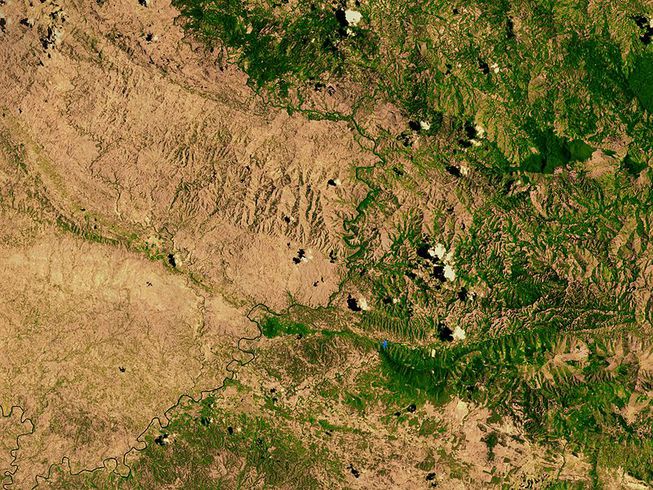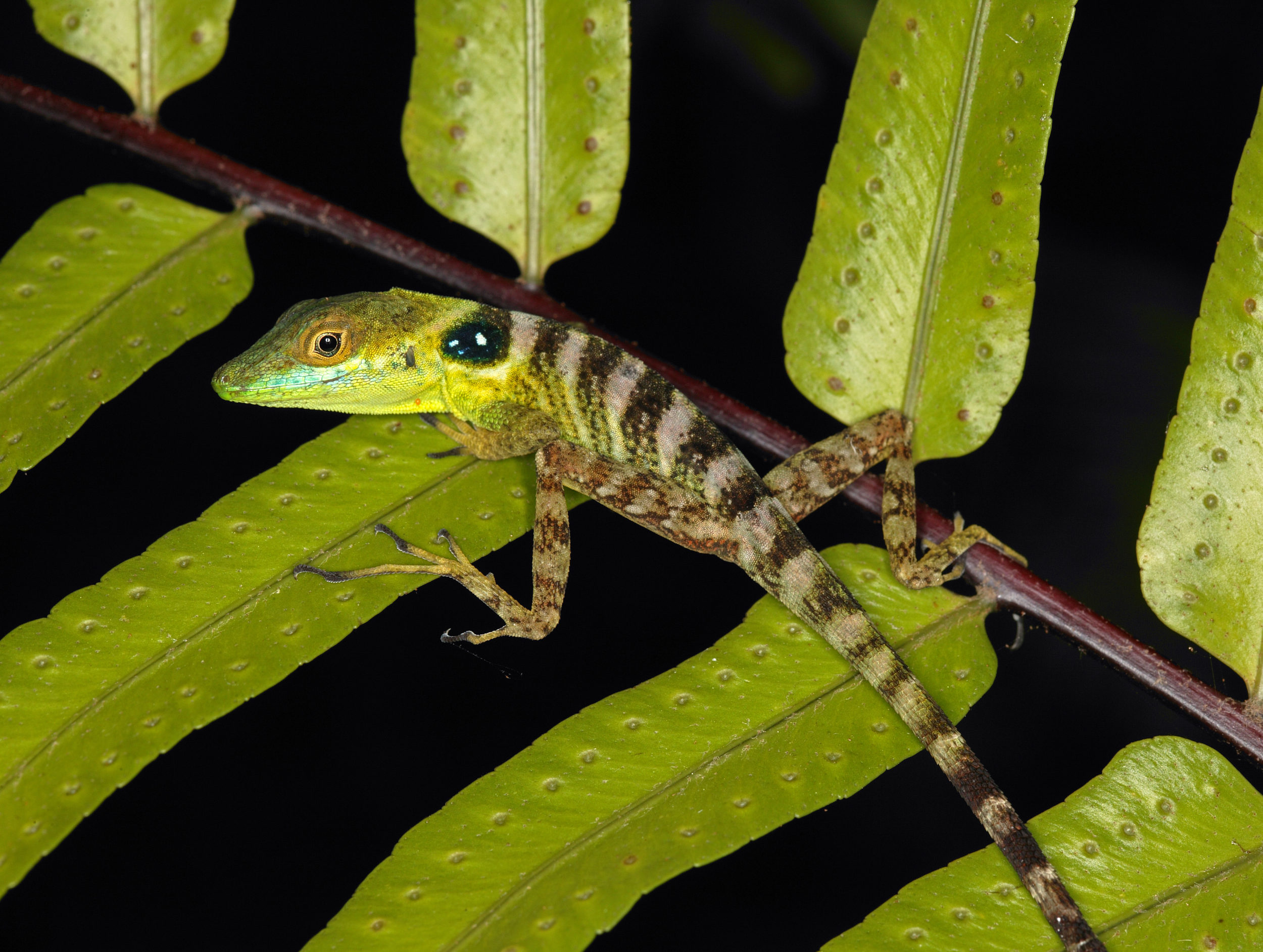
The border between Haiti (left) and the Dominican Republic (right), shows the disastrous extent of habitat loss in Haiti. (Photo: NASA/Goddard Space Flight Center Scientific Visualization Studio)
Haiti’s deforestation crisis has hit a perilous milestone: if the current rate of deforestation continues, all of the country’s original primary forests—and the majority of species that inhabit them—will vanish within 20 years.
A recent study1 published in Proceedings of the National Academy of Sciences paints a stark picture of this continuing biodiversity disaster. The study provides further evidence of an unchecked, global threat to populations of primary forest-dwelling vertebrates, and suggests that mass extinctions may be imminent in other tropical countries undergoing heavy deforestation.
For the past 15 years, VCE biologists have worked closely with conservation counterparts in Haiti and the Dominican Republic to stem the devastating rate of deforestation on the shared island of Hispaniola. Chris Rimmer and a team of biologists traveled to Haiti’s La Visite National Park in 2005, returning in 2013 and 2014, to perform rapid conservation assessments of vulnerable montane forest birds, both endemic species such as La Selle Thrush and wintering North American migrants such as Bicknell’s Thrush. Their field observations and resulting calls for immediate, decisive conservation action elucidated shocking declines of the park’s broadleaf forests, which were reduced in size, heavily fragmented, and severely threatened by unsustainable agricultural activities.
Haiti is one of the poorest countries in the developing world. With a land area less than 11,000 square miles, it holds nearly 11 million people, a staggering density of ~1,000 per square mile. Despite the Haitian government’s efforts to designate large tracts of land as national parks, deforestation proceeds unabated within protected area boundaries. People on the brink of survival clear-cut the forests for charcoal production, subsistence agriculture, and daily cooking/heating fuel needs.
As a result, Haiti retains less than 1% of its original forest (known as “primary forest”), ranking it among the most deforested countries globally. Perhaps a more disturbing finding revealed by this study is that diversity of endemic mountaintop-dwelling vertebrate species—those found only in Haiti, some only on a single mountain—has drastically declined along with the loss of forest.

Mountain Anole (Anolis monticola) an endemic lizard from Massif La Hotte, Haiti. / © Eladio Fernandez
Blair Hedges of Temple University, lead author of the study states, “Species extinction is usually delayed until the last habitats are gone, but mass extinction appears imminent in a small number of tropical countries with low forest cover.” He further states, “And mass extinction is already happening in Haiti because of deforestation.” (Read more at: https://phys.org/news/2018-10-animal-species-extinct-haiti-deforestation.html#jCp)
In close collaboration with longtime colleague Jim Goetz of Cornell University, VCE continues to work with local NGO partner Fondation Seguin to counter chronic biodiversity loss in Haiti’s La Visite National Park. Our efforts center on establishing conservation measures that protect and restore critical primary broadleaf forest habitat, while meeting the needs of local communities. These include providing financial incentives to prevent clearing, grazing, and agriculture; encouraging local farmers to grow nursery stock using native tree species; working with local landholders to reforest their parcels; and fostering community pride in restoring La Visite’s fragile ecological balance.
Despite this truly dire situation, VCE will continue its collaborative work to conserve Haiti’s remaining primary forests and their critically endangered fauna. You can help by supporting Societé Audubon d’Haiti and Haiti National Trust, two organizations working tirelessly on the ground to address this issue from every angle. If we act swiftly, effectively, and in unison, there may be time to turn the tide against mass extinction of biodiversity in Haiti.
1 S. Blair Hedges et al., Haiti’s biodiversity threatened by nearly complete loss of primary forest, Proceedings of the National Academy of Sciences (2018). DOI: 10.1073/pnas.1809753115
Related VCE publications
C.C. Rimmer, Goetz, J.E., Garrido Gomez, E., Brocca, J.L., Bayard, P., and Hilaire, J.V. 2010. Avifaunal surveys in La Visite National Park–last vestiges of montane broadleaf forest in eastern Haiti. Journal of Caribbean Ornithology 23:31-43. (PDF)
C.C Rimmer, Townsend, J.M., Townsend, A.K., Fernández, E.M., and Almonte. J. 2005. Avian diversity, abundance, and conservation status in the Macaya Biosphere Reserve of Haiti. Ornitologia Neotropical 16: 219–230. (PDF)
C.C. Rimmer. 2005. Bird conservation in Haiti: it’s now or never to save Haiti’s birds. Journal of Caribbean Ornithology 18:86-87. (PDF)


Thanks for posting this Chris. It’s quite sad.
“Long ago” (the late 1980s and early 90s) two friends (one worked for the U.S. Agency for International Development, another for the natural resources sector of the C.I.A. (yes, they did do some good things), and myself, a tropical forest consultant, got together and tried to interest the U.S. government and some private organizations in re-foresting Haiti with Leucaena, a fast-growing tree species, that could provide firewood, livestock forage, and soil stability.
That was in what became the Reagan Era, another time when our government was into denial.
I think it’s past time to try again…
Planting Leucaena leucocephala. an extremely invasive non-native species, would be a disaster in itself. Reforest with endemic species.
Clarification: The above posting regarding efforts to plant Leucaena in Haiti occurred in the late 1970s and early 80s, not a decade later.